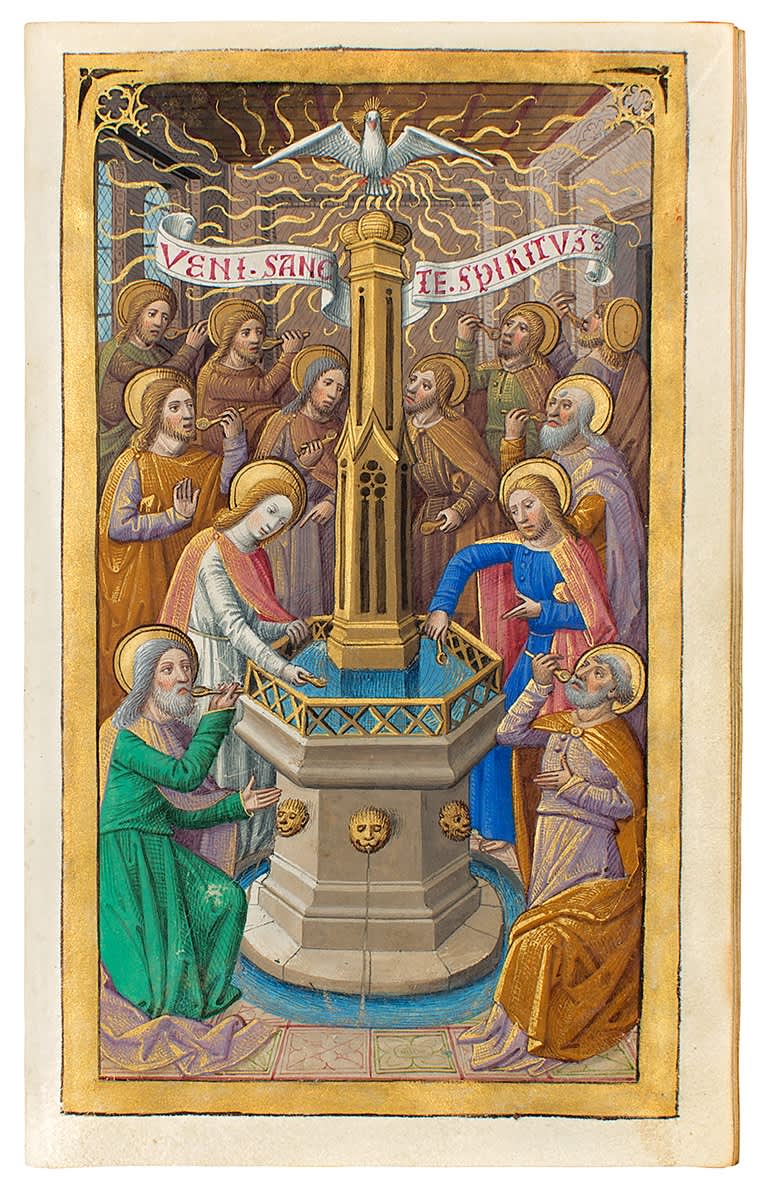Artworks


Hearst Book of Hours, for the use of Rome, in Latin with French calendar. Manuscript on vellum, illuminated by the Master of Jacques de Besançon with participation of the Master of the Chronique Scandaleuse, France, Paris, c. 1480-1490
Hide caption

Hearst Book of Hours, for the use of Rome, in Latin with French calendar
Manuscript on vellum, illuminated by the Master of Jacques de Besançon (François le
Barbier Fils?) with participation of the Master of the Chronique Scandaleuse
France, Paris, c. 1480-1490


Hearst Book of Hours, for the use of Rome, in Latin with French calendar
Manuscript on vellum, illuminated by the Master of Jacques de Besançon (François le
Barbier Fils?) with participation of the Master of the Chronique Scandaleuse
France, Paris, c. 1480-1490


Hearst Book of Hours, for the use of Rome, in Latin with French calendar
Manuscript on vellum, illuminated by the Master of Jacques de Besançon (François le
Barbier Fils?) with participation of the Master of the Chronique Scandaleuse
France, Paris, c. 1480-1490


Hearst Book of Hours, for the use of Rome, in Latin with French calendar
Manuscript on vellum, illuminated by the Master of Jacques de Besançon (François le
Barbier Fils?) with participation of the Master of the Chronique Scandaleuse
France, Paris, c. 1480-1490


Hearst Book of Hours, for the use of Rome, in Latin with French calendar
Manuscript on vellum, illuminated by the Master of Jacques de Besançon (François le
Barbier Fils?) with participation of the Master of the Chronique Scandaleuse
France, Paris, c. 1480-1490

The manuscript at hand is far more than an exquisite display of the work of the Master of Jacques de Besançon, an especially prominent artist leading the renowned Parisian circles of illumination. It moreover flaunts a creative compilation of iconographic rarities that raise tantalizing questions regarding the original commission governing its precise production.
The first anomaly confronting the traditional illustration of Book of Hours is the present book’s serial Passion iconography which eventually led to an inscription by modern owners suggesting that the manuscript be termed an ‘Hours of the Passion’. While the Passion series as an independent pictorial cycle is not uncommon, the collection of images here is used to divide the Hours of the Virgin, opening peculiarly with a Tree of Jesse miniature. Of the eight full-page miniatures introducing each of the hours, four are double miniatures. The association of first four sections with their visual counterparts strays from the usual organization of the illustrations for the Hours of the Virgin. A curious addition to the repertoire of images is a miniature dedicated to the construction of the Cross. More common iconography, such as Veronica displaying the Vera Icon, is relegated to the background of this scene. The unique arrangement and selection of imagery of this Passion narrative and the deliberate choice to intersperse it in the Hours of the Virgin demonstrates the degree to which a Book of Hours could be highly personalized for the patron for whom it was commissioned.
The singularity of the present manuscript continues through the Hours of the Holy Spirit, which opens with the Fountain of the Apostles rather than the more standard illustration of Pentecost. The twelve apostles, shown without the Virgin Mary, are gathered around the fountain of life and drink from it with golden spoons.
The elaborate calendar opening the present manuscript reveals the additional hand of yet another prominent artist. An architectural frame provides seven niches, each featuring a miniature depicting the labours, astrological signs, and the saints of the month. The artistic style and execution of these images point to the Master of the Chronique Scandaleuse.
This work is now in the collection of the Kolumba Museum in Cologne.



